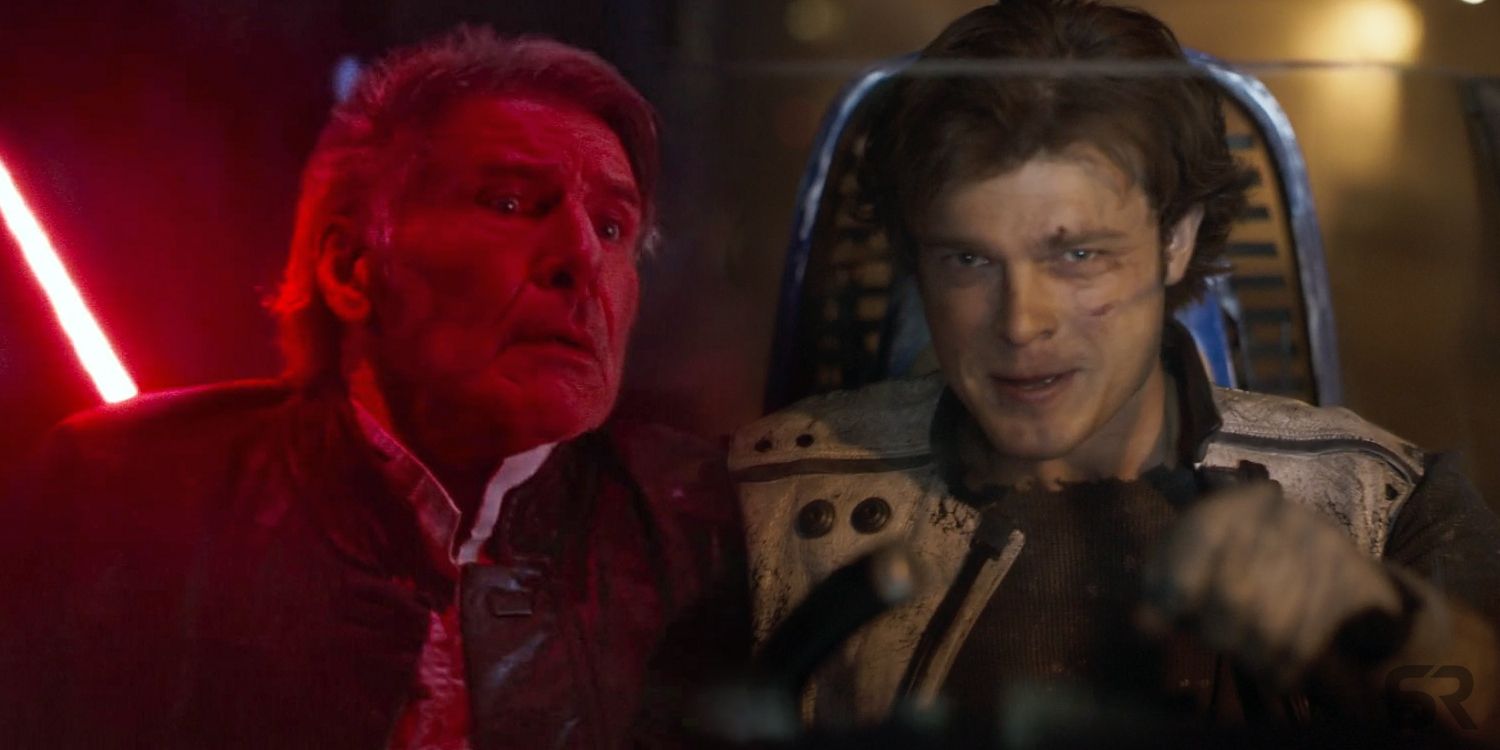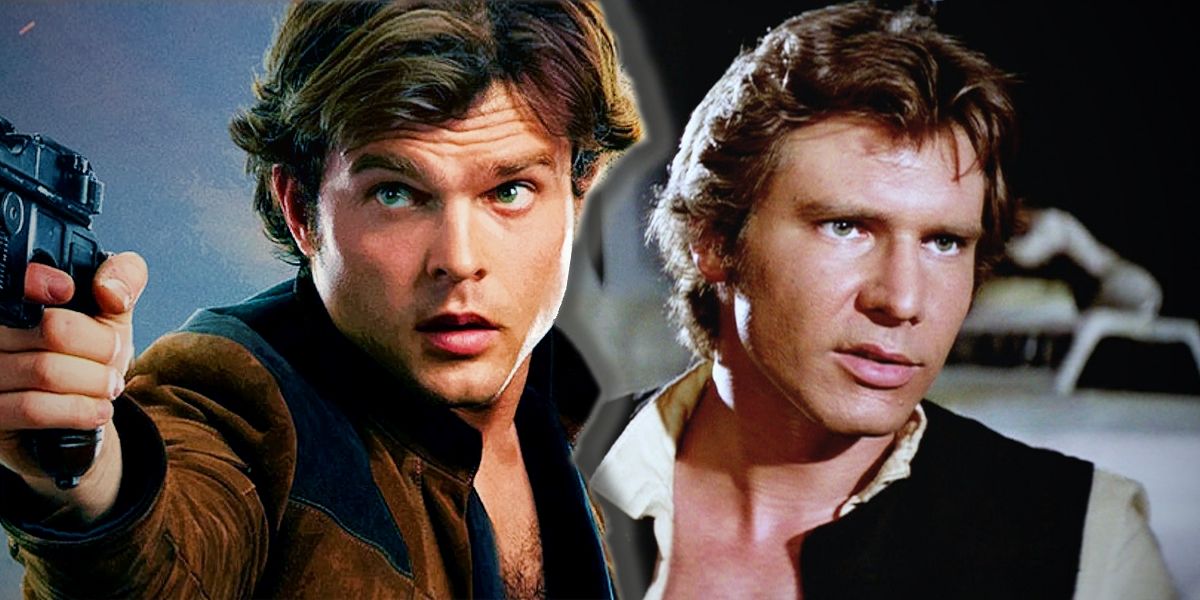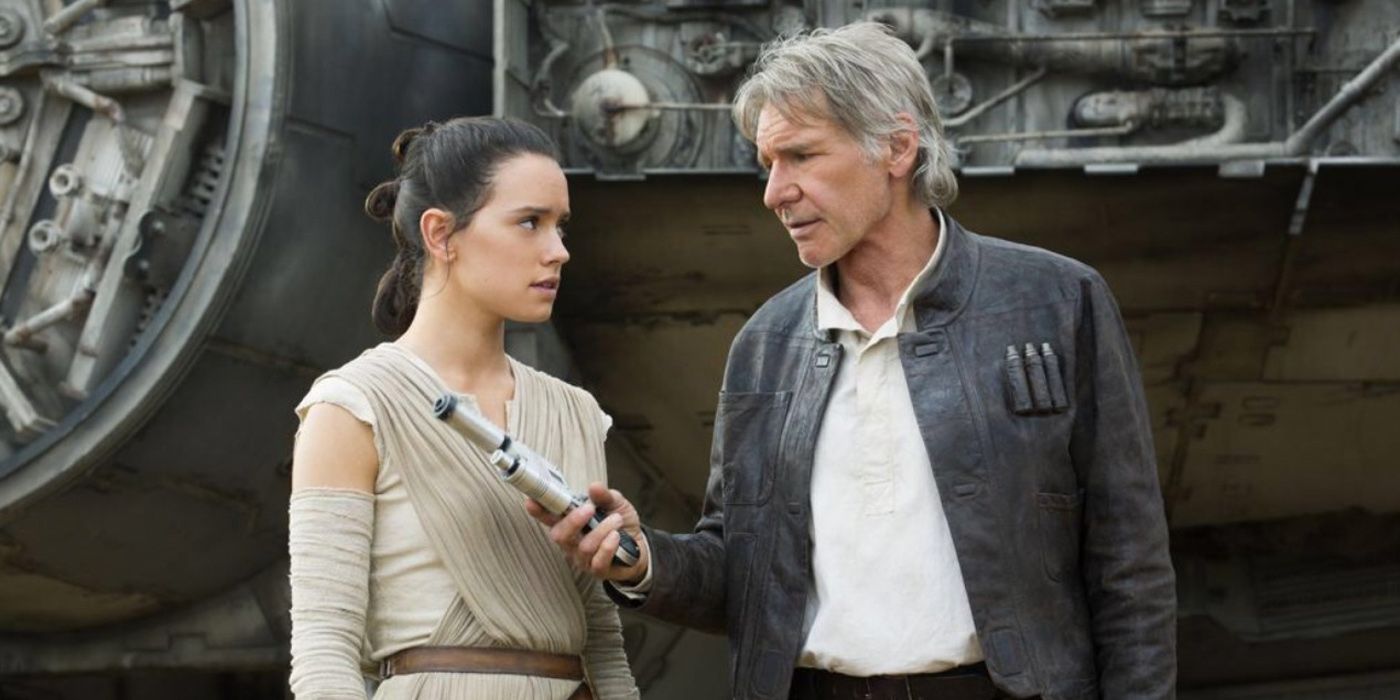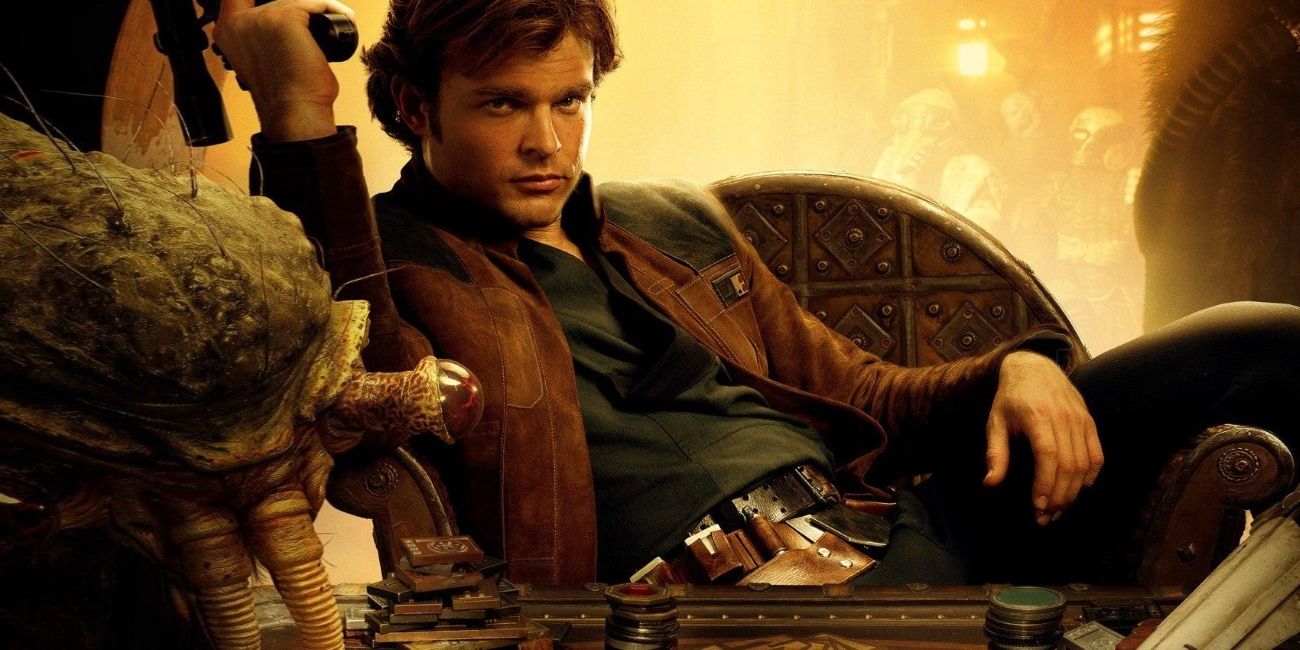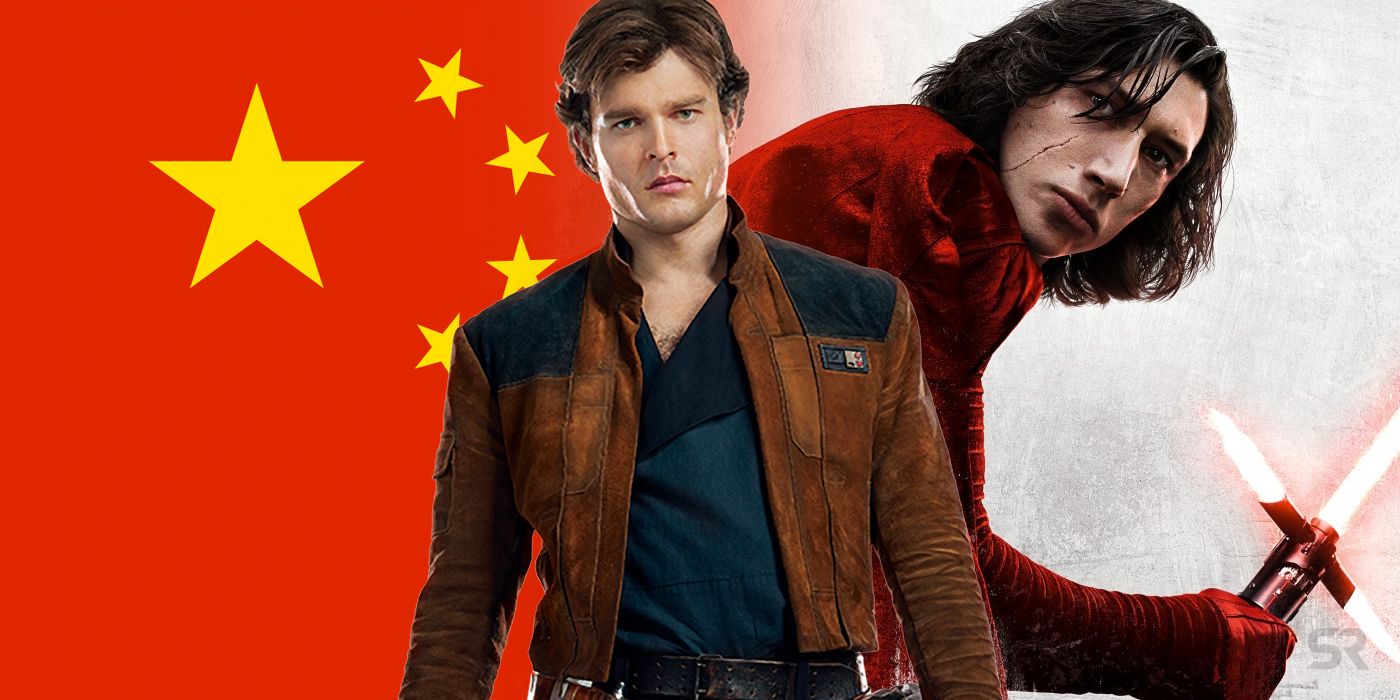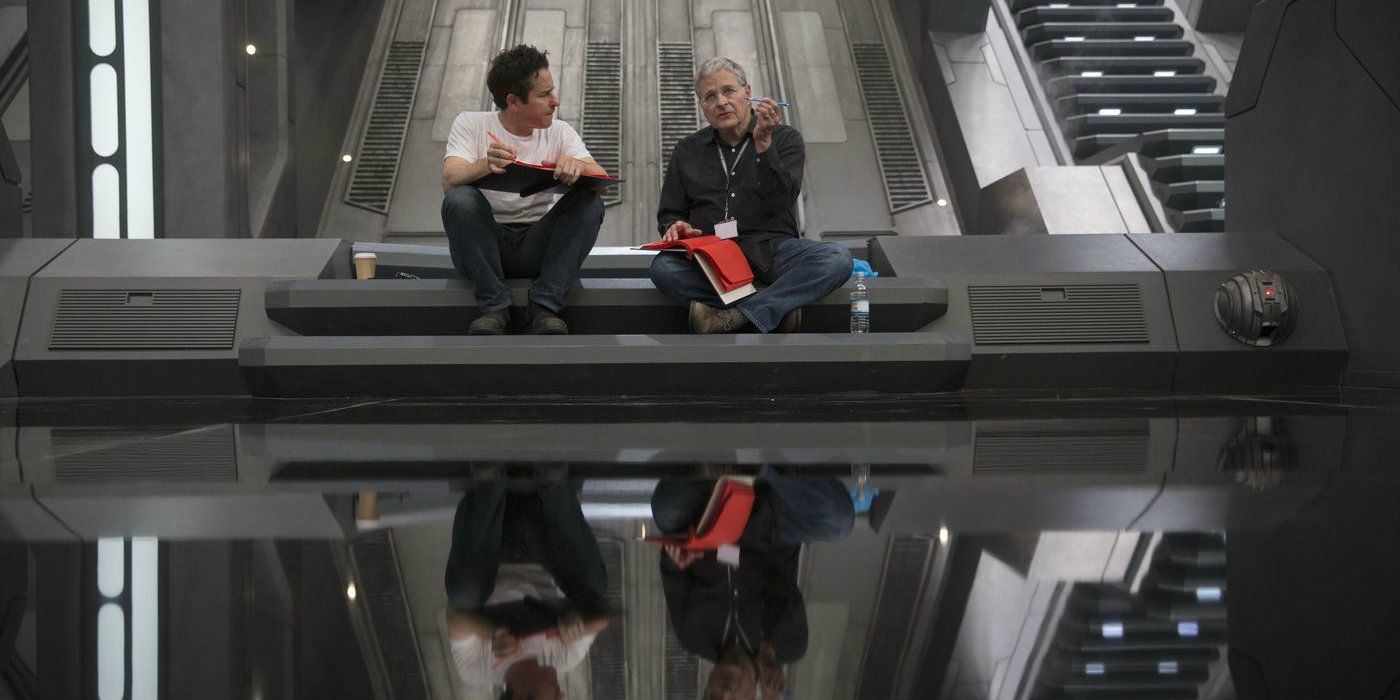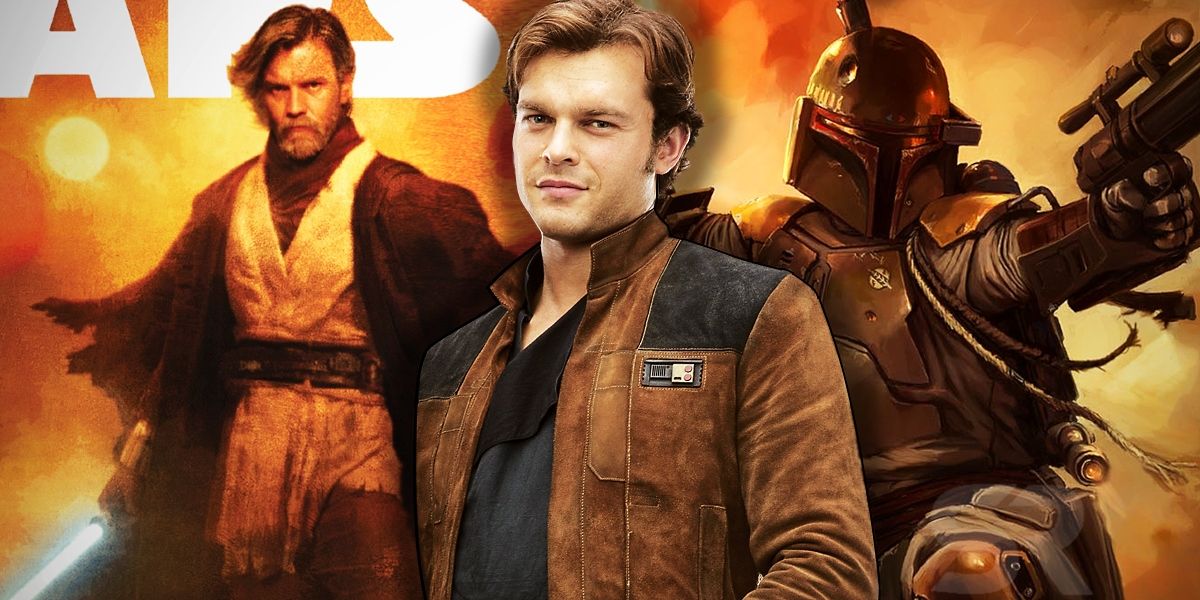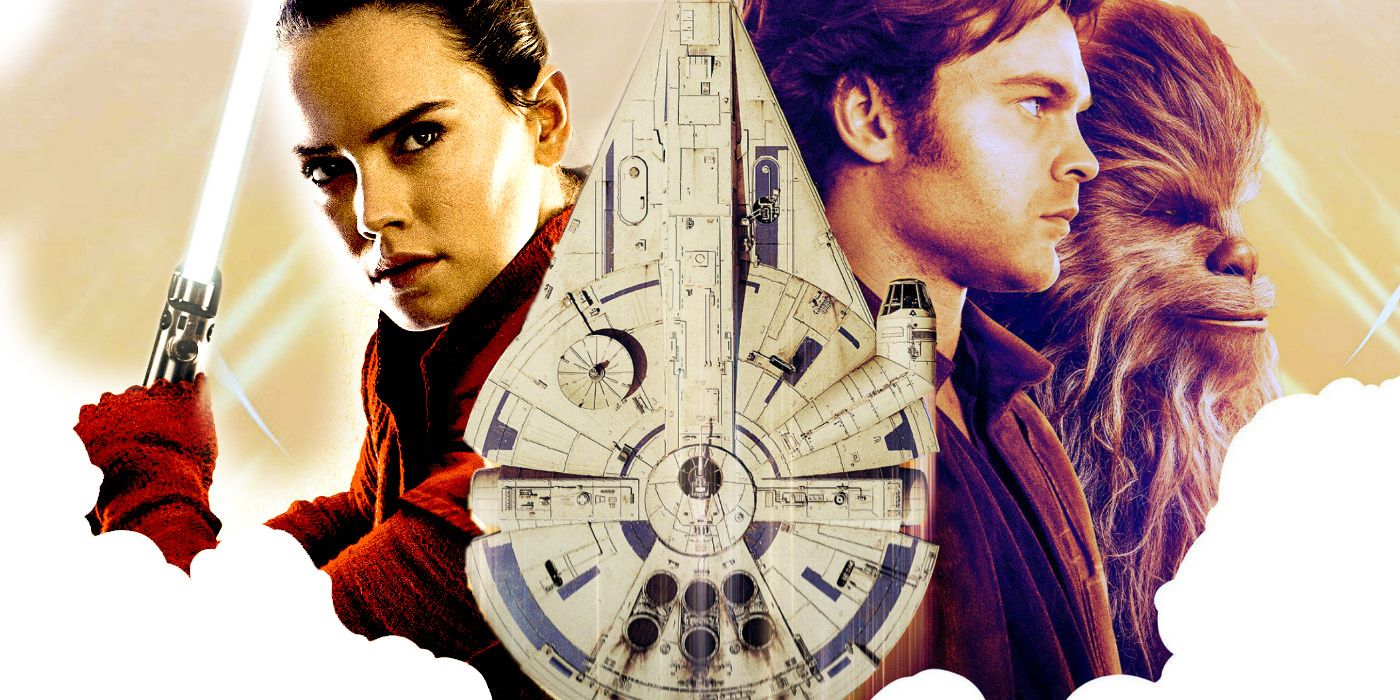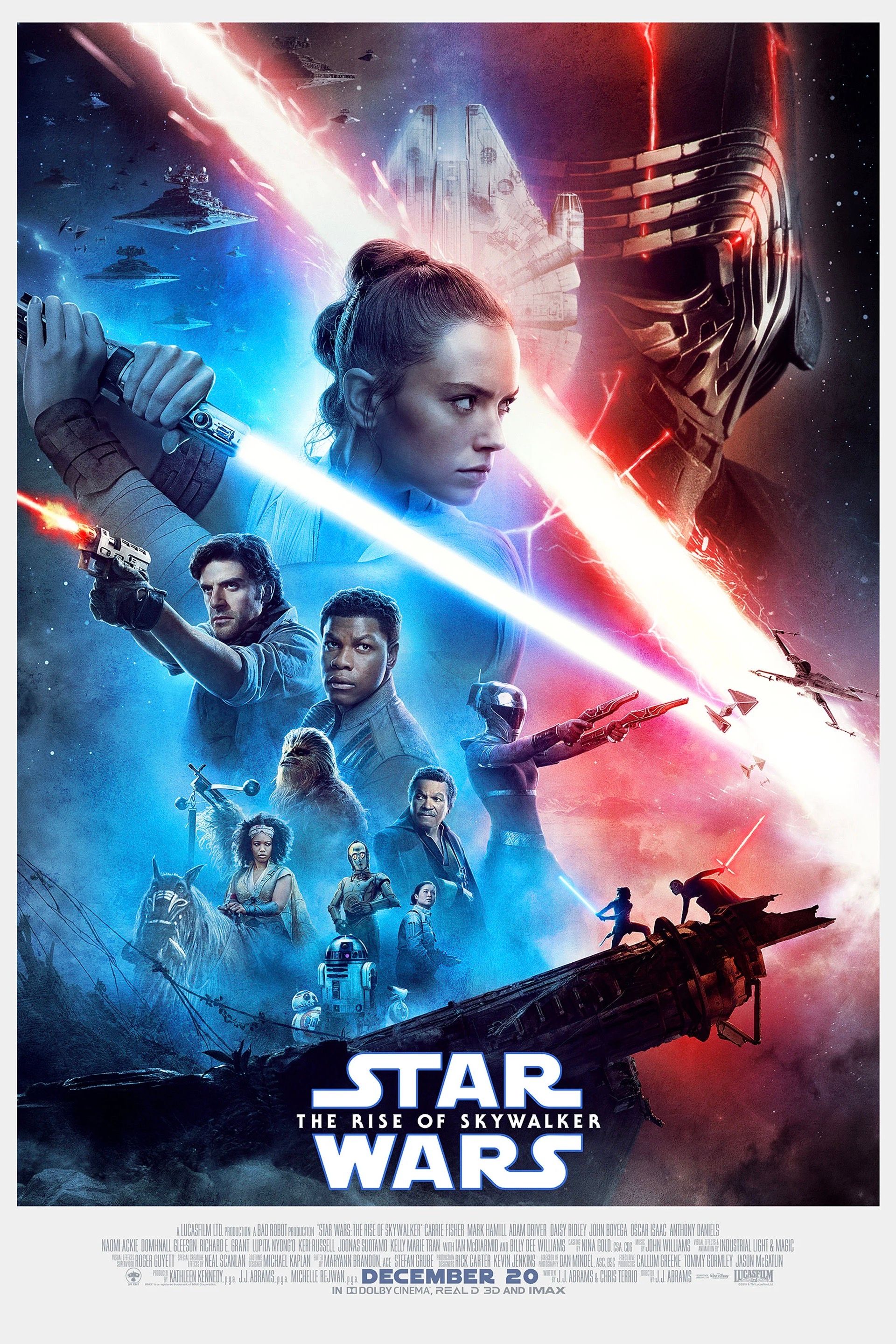Warning: This article contains SPOILERS for Solo: A Star Wars Story.
Ron Howard's Solo: A Star Wars Story should have released right after J.J. Abrams' Star Wars: The Force Awakens instead of over two years later. The thing is, the idea of a young Han Solo movie was around long before The Walt Disney Company purchased Lucasfilm in 2012, when George Lucas was still in control of the Star Wars brand, and it was given the green light almost right after the Star Wars acquisition. It didn't need to take five years to develop and film before hitting theaters this year; it could've released long before that, which was the original plan.
But, behind-the-scenes issues required Lucasfilm to introduce audiences to their Star Wars spinoff movies by leading with Gareth Edwards' Rogue One: A Star Wars Story in 2016, which was the second movie to release following the Disney acquisition. While that movie was well received by audiences and critics alike, and it had an exceptional run at the domestic and worldwide box office, it stands to reason that Solo: A Star Wars Story - which is based on a script by Jonathan Kasdan and Lawrence Kasdan - should've released first, with Rogue One following suit in 2018.
Related: Star Wars Timeline: When Is SOLO Set & How Old Is Han?
- This Page: How Solo Parallels The Force Awakens
- Page 2: Solo's Box Office Potential & Lucasfilm's Original Plan
Solo: A Star Wars Story Parallels The Force Awakens
Han Solo is the galaxy's most beloved smugger (turned Rebellion hero), but not too many people were initially sold on the idea of a young Han Solo movie - and many people still aren't. There's been an active base of detractors for Solo: A Star Wars Story ever since its announcement, with the common feeling amongst those critics being that this movie is "unnecessary" (which in and of itself is a ridiculous argument since all Star Wars movies are "unnecessary"). But, it's arguable that audiences would've been more receptive to the film if it had been the first Star Wars spinoff to release way back in December 2016, not Rogue One: A Star Wars Story.
And while several Star Wars fans consider Rogue One: A Star Wars Story to be the best Star Wars movie that has been released under the Disney-owned Lucasfilm brand, its story is one that would've tied more organically into the events of Rian Johnson's Star Wars: The Last Jedi instead of 2015's Star Wars: The Force Awakens. Lucasfilm purposefully put a focus on Han Solo in Star Wars: The Force Awakens, not to mention paralleling his story with that of Rey's, which is a narrative that would've continued if they had released Solo: A Star Wars Story the year after. Seeing Harrison Ford's Han Solo die on-screen, and then seeing Chewbacca lose a lifelong friend in the process, was an emotional twist for longtime fans.
Related: How Solo: A Star Wars Story Compares To Rogue One
Then, in theory, an ideal narrative structure for the overall saga, one that would've been somewhat cathartic for fans, is if Solo: A Star Wars Story released one year after Star Wars: The Force Awakens, giving audiences Han Solo's origin story (a rebirth, of sorts, with a new cast and new story) a year after showing those moviegoers Han Solo's concluding arc. Plus, as mentioned, there are certain parallels between Han Solo and Rey's early character arcs, such as them both wanting to go back to forsaken planets (Corellia for Han and Jakku for Rey) because they both have to get back to someone(s). And what's interesting about that is Han and Rey both use the same quote when talking about going back: "I've already been away too long." That is a parallel that could've been explored while audiences waited for Episode VIII to come along.
Interestingly, while there's a similarity for Rey and Han Solo's character arcs in Star Wars: The Force Awakens and Solo: A Star Wars Story, respectively, there's also an intriguing narrative parallel for the Resistance and Rebellion in Star Wars: The Last Jedi and Rogue One: A Star Wars Story. The Resistance was at the end of their rope in Star Wars: The Last Jedi and the film ended with them finding a new hope to fight another day; the same thing happened to the Rebellion in Rogue One: A Star Wars Story, which means it could've released after Episode VIII and given audiences more to examine. Of course, there's no telling what that movie's box office gross would've been like if it hadn't released in 2016, regardless of its quality. But, it's possible Solo: A Star Wars Story could've fared better.
Page 2 of 2: Solo's Box Office Potential & Lucasfilm's Original Plan
Solo: A Star Wars Story Would've Done Better At The Box Office
A common argument for Solo: A Star Wars Story being "unnecessary" is its box office gross; Solo: A Star Wars Story grossed $103 million over the 4-day Memorial Day Weekend, making it the worst debut in franchise history, even when adjusting for ticket price inflation. The film is clearly underperforming at the domestic and worldwide box office compared to Rogue One: A Star Wars Story (which opened to $155 million in 3 days), and there are many reasons for that: its release date being in May (and just five months after Star Wars: The Last Jedi), a heavily truncated marketing campaign, debuting right after Avengers: Infinity War and Deadpool 2 (two highly-anticipated superhero sequels), and of course, the lackluster reviews, among other things. Given the subject matter, however, it stands to reason that releasing in Rogue One's spot in December 2016 would've been much better for the young Han Solo movie.
Related: Why Star Wars Movies Keep Bombing at the Chinese Box Office
Blockbuster movies are no longer relegated to the spring/summer seasons, as recent years have proven. Highly-anticipated movies can release as early as February and as late as December nowadays. (January still appears to be a no-go.) While Star Wars movies have traditionally released around the Memorial Day Weekend in May, Disney changed all that by making mid-December an unofficial Star Wars holiday since 2015, which makes Solo: A Star Wars Story's release in May an exception. Given its action-adventure storyline and family-friendly appeal, Solo: A Star Wars Story likely would've had a better opening weekend if it had released in December 2016.
After all, it's possible that Rogue One: A Star Wars Story's exceptional gross was due to being the first Star Wars spinoff movie and the second overall Star Wars movie to release in more than a decade. That isn't a phenomenon that's exclusive to Star Wars either; Iron Man 3's box office gross far exceeded its fellow Marvel Cinematic Universe movies because it was the first MCU movie to release following the release of Joss Whedon's The Avengers, not due to its story or quality. Moreover, giving audiences their first taste at a Star Wars spinoff movie by continuing the story of a beloved franchise character is arguably better than testing the waters with a movie that fills an age-old plot hole, which could've waited until this year to do since its relevance isn't explicitly about expanding the saga so much as mending it.
Lucasfilm Wanted to Release Solo: A Star Wars Story in 2016
Clearly, it would've been better if Solo: A Star Wars Story released right after Star Wars: The Force Awakens - and Lucasfilm isn't oblivious to that notion. As previously mentioned, it was supposed to be their first anthology movie, but behind-the-scenes issues with Episode VII required them to move things around. In early 2013, legendary screenwriter Lawrence Kasdan (The Empire Strikes Back) was working on the script for Solo: A Star Wars Story while consulting on the story for Star Wars: The Force Awakens, but when that film's scribe, Michael Arndt, wanted an additional 18 months to complete the script, Lucasfilm requested that Kasdan hop on over to the mainline saga once again and co-write Episode VII's the screenplay with J.J. Abrams, who had just signed on to direct the movie.
Related: What Boba Fett & Obi-Wan Can Learn from Solo's Disappointment
Because of that, Solo: A Star Wars Story was temporarily set aside, which is why Rogue One: A Star Wars Story ended up taking its spot in 2016. This was recently confirmed by Star Wars: The Force Awakens concept artist Doug Chiang in Solo's official book, The Art of Solo: A Star Wars Story. He said:
"I was still working on Star Wars: The Force Awakens when Jason [McGatlin] asked me to assemble and oversee a small team of part-time artists to help inspire Larry [Lawrence Kasdan]. Although I didn't get a full story brief, Larry gave me enough information to start development for several key characters and environments. At that time, the plan was for 'Harry and the Boy' (Solo's internal working title) to be the next Star Wars film after The Force Awakens."
What's interesting is that Lawrence Kasdan asked his son, Jonathan Kasdan (The First Time), to continue working on Solo: A Star Wars Story's script when he left to co-write Episode VII with Abrams. (It's worth noting that George Lucas originally hired Lawrence to write the script for a young Han Solo movie before Disney acquired Lucasfilm.) Jonathan had been unofficially consulting on the script with his father, but when Lawrence left, Jonathan ended up being officially brought on. If that didn't happen, who knows if the movie would've even been made or if that big cameo would've happened. After all, Jonathan Kasdan's idea for Han Solo's name reveal was what convinced Disney to make the movie, and he's the person who pushed for Maul's inclusion since the very beginning. While things may have worked out for the better for everyone involved, that still doesn't change the idea that Solo: A Star Wars Story should've released right after Star Wars: The Force Awakens, not more than two years later.
More: Star Wars Spinoffs Are Better Than The Main Episodes

